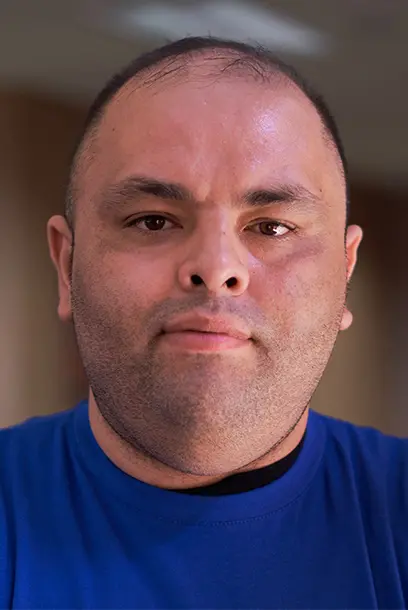Mobile application can improve road safety
Hi there, Oscar Molina! Your research is about improving road safety using automated and connected vehicles. You recently presented the first demo within the SafeSmart project at AstaZero. Can you tell us a little about your research and the SafeSmart project?

“The SafeSmart project, and the collaborations it has triggered, can help us reach the goal of having zero deaths and zero serious injuries in road accidents by the year 2050. This is important in a country like Sweden, where bicycles are widely used.”
Oscar Molina, PhD in Telematics Engineering at Halmstad University
“Just in 2019, around 6 000 pedestrians and cyclists died in traffic accidents in Europe. The SafeSmart project, and the collaborations it has triggered, can help us reach the goal of having zero deaths and zero serious injuries in road accidents by the year 2050. This is important in a country like Sweden, where bicycles are widely used. That same year, 2019, vulnerable road users made up 20 per cent of road fatalities. That’s 2.2 deaths per hundred thousand inhabitants, which is unacceptable”, says Oscar Molina, PhD in Telematics Engineering working with Connected, Cooperative and Automated Mobility (CCAM).
How can your research help to achieve the goal of zero deaths in traffic?
“We are using vehicular networks (V2X) to protect Vulnerable Road Users (VRUs), such as pedestrians and cyclists. We are using a two-pronged approach. One path follows developing an app for normal mobile phones to reach a fast deployment, and the other path enters into the embedded systems area, where vehicular networks are fully exploited”, says Oscar Molina.

Oscar Molina is a PhD in Telematics Engineering at the School of Information Technology at Halmstad University.
Can you tell us about the first demo you recently presented within SafeSmart?
“Our demo includes the first version of the mobile app and an existing traffic control system that is deployed in the AstaZero grounds. AstaZero proposed this application as a tool to protect test engineers, guests, and clients in the testing grounds and they are providing the infrastructure to support our developments”, says Oscar Molina and continues:
“The first demo is straightforward. A test engineer will carry a phone with our app, which will then publish the engineer’s status to the AstaZero traffic control centre, making this information available to connected and automated vehicles. This makes the vehicles become aware of the presence of the test engineer and can execute evasive manoeuvres safely and timely.”

The SafeSmart projects uses V2X to create a safer traffic environment.
So, the demo was about the first path you described. What has been done regarding the second path within the embedded systems area?
“The second prong, where we use vehicular networks, has prompted questions regarding the feasibility of a system using the current specification for vehicular networks, namely the ETSI (Intelligent Transport Systems) protocol stack. We evaluated the protocol stack in a simulated environment and found some shortcomings in terms of efficiency. For example, a device can trigger a flood of unnecessary retransmissions, which the protocol, in its current version, cannot avoid. We have optimised the protocol, and now we can say that we have made it more efficient”, says Oscar Molina.
Text: Anna-Frida Agardson
Portrait photo: Sergio Gonzalez-Diaz
Photo: Pixabay
Top illustration: iStock
Finacer and collaboration
The project is funded by the Knowledge Foundation, in collaboration with AstaZero, EVAM, Gutec, Quviq and Scania. Researchers from Halmstad University are responsible for the communication systems. AstaZero provides a test track where there are copies of everything from city districts to motorways.


